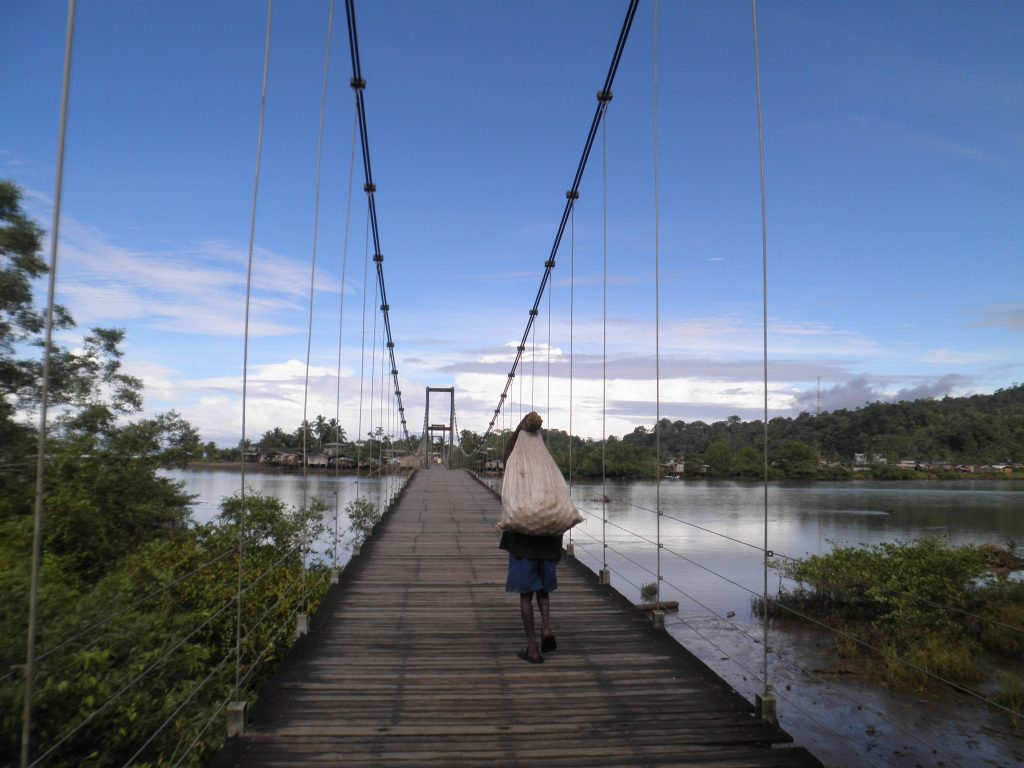Haga clic aquí para leer la noticia en Español.
Throughout 2020, a year of global disruption and upheaval, government actors and Colombian civil society members continued to advance implementation of the stipulations outlined under the 2016 Peace Agreement between the Colombian government and the former FARC-EP. On May 26, the Peace Accords Matrix (PAM) at the University of Notre Dame’s Kroc Institute for International Peace Studies launched its fifth comprehensive report on the implementation of the Colombian peace agreement. The report, “The Colombian Final Agreement in the Era of COVID-19: Institutional and Citizen Ownership is Key to Implementation,” covers the period between December 2019 and November 2020.
“Institutional commitments and the work and trust of social and grassroots organizations were essential for advancing implementation despite unparalleled difficulties during the year 2020,” said Josefina Echavarría, PAM director.
This reporting period was filled with unanticipated challenges that complicated implementation of the agreement’s stipulations. The COVID-19 pandemic generated a severe health crisis throughout the country, and government-imposed restrictions intended to curb the spread of the virus forced community-level consultation processes under the agreement to switch to an online format. The pandemic also heightened existing inequalities and vulnerabilities in the territories.
Additionally, the persistence of insecurity in numerous territories throughout the country, including ongoing continuing attacks and threats against FARC-EP ex-combatants in the process of reincorporation and an increase in homicides against human rights defenders and social and environmental leaders, hampered the pace of implementation.
“This year, implementation was increasingly shifting toward the local and territorial levels,” said Echavarría. “The restrictions and insecurity disproportionately affected the realization of commitments for democratic political participation, and the present situation reinforces the urgent need to tackle these gaps and strengthen dialogue.”
One positive development in the accord’s general implementation was that, during the reporting period, the percentage of stipulations that reached full implementation climbed two percentage points from 26 percent in November 2019 to 28 percent in November 2020.
Despite challenges, the report identifies several areas of progress. Points 1 and 5, focusing on comprehensive rural reform and the victims of the armed conflict respectively, each registered a 9 percent drops in the number of uninitiated stipulations. Furthermore, a number of departmental and municipal governments, especially those included in Development Programs with a Territorial Focus regions prioritized by the accord, included key aspects of the final agreement as medium- and long-term policies in their 2020-2023 development plans. This represents an important example of how the agreement’s commitments can be incorporated in local and regional policy to create lasting change in the country’s most vulnerable territories.
Point 4, focused on the solution to the problem of illicit drugs, saw the most significant increase in stipulations completed during the report period, moving from 8 percent to 17 percent completed.
Point 6, focused on implementation, verification and public endorsement, is the area with the highest number of completed stipulations since implementation began in December 2016. During the reporting period, this point registered only a modest increase in completed stipulations, moving from 54 percent to 55 percent. This slight year-to-year increase in implementation reflects broader challenges that remain and the opportunities ahead for successful execution of the agreement’s commitments. For example, the Commission for Monitoring, Promoting and Verifying the Implementation of the Final Agreement has yet to reach its full potential as a space for constructive dialogue and conflict resolution between the signatory parties, with the support of the international community.
The report also outlines successful efforts made during this period to keep the special ethnic and gender forums created by the final agreement active. Nevertheless, a significant gap remained between these focus areas’ stipulations compared to overall implementation. The completed gender stipulations are 18 percentage points behind the general level of completed stipulations, while ethnic stipulations trail by 15 percentage points. In order to achieve a sustainable, equitable and lasting peace, it is critical that the pace of implementation and integration of these cross-cutting approaches improve.
In addition to the specific points and cross-cutting themes requiring greater attention, other legal and financial gaps remain challenges for full implementation of the agreement. There are still weaknesses in the legal framework necessary for the fulfillment of the agreement’s stipulations, and a significant difference exists between the current peacebuilding funds and what is needed to meet the goals established in the Framework Plan for Implementation.
Similarly, it is important to secure resources for the implementation of the agreement’s commitments in the departmental and municipal development plans and to affirm the territorial peace and reconciliation councils as authorities for dialogue and consensus building. These entities are key to implementing the agreement at the local level and must have both the ability and financial resources to advance this work.
While the following years will undeniably hold unanticipated obstacles to carrying out the commitments outlined under the peace agreement, 2020 has presented an opportunity for implementing agencies to increase their capacity for adapting and developing alternate means of completing the agreement’s stipulations. As more organizations and individuals take ownership of the peace process, the learning cycle that implementers have undergone in the territories can provide valuable lessons for other regions to meet the demands of the final agreement’s commitments.
“As we enter the fifth year of implementation, we realize that local, regional, national and international agencies and communities have built excellent networks, alliances, and knowledge around the peace accord,” said says Echavarría. “We need to continue strengthening implementation to learn from and with one another.”
Access the full report in Spanish.
Access the Executive Summary in English.
Media Contact:
- Colleen Sharkey, csharke2@nd.edu, +1 (574)- 999-0102
Originally published at kroc.nd.edu on May 25, 2021.



